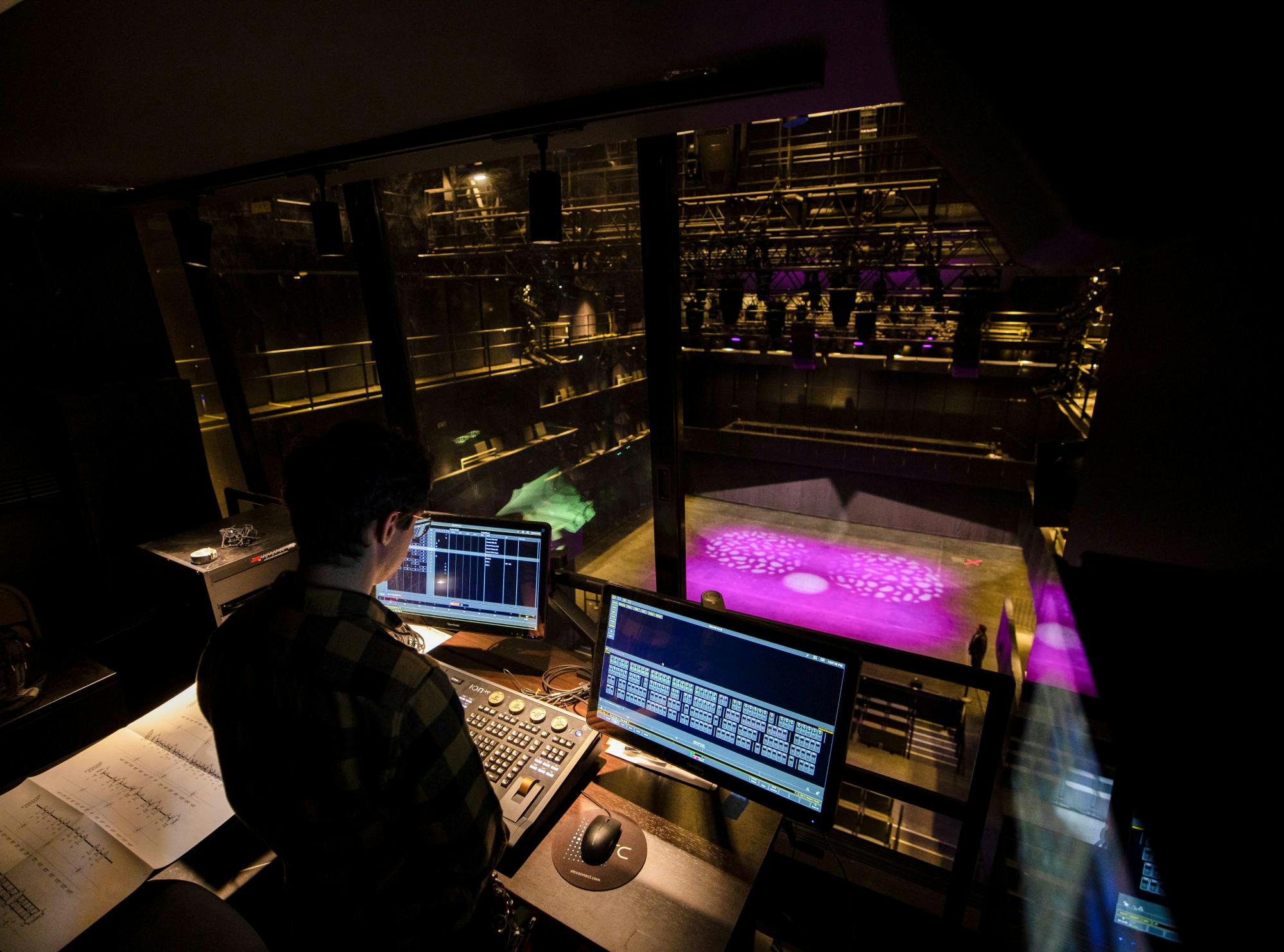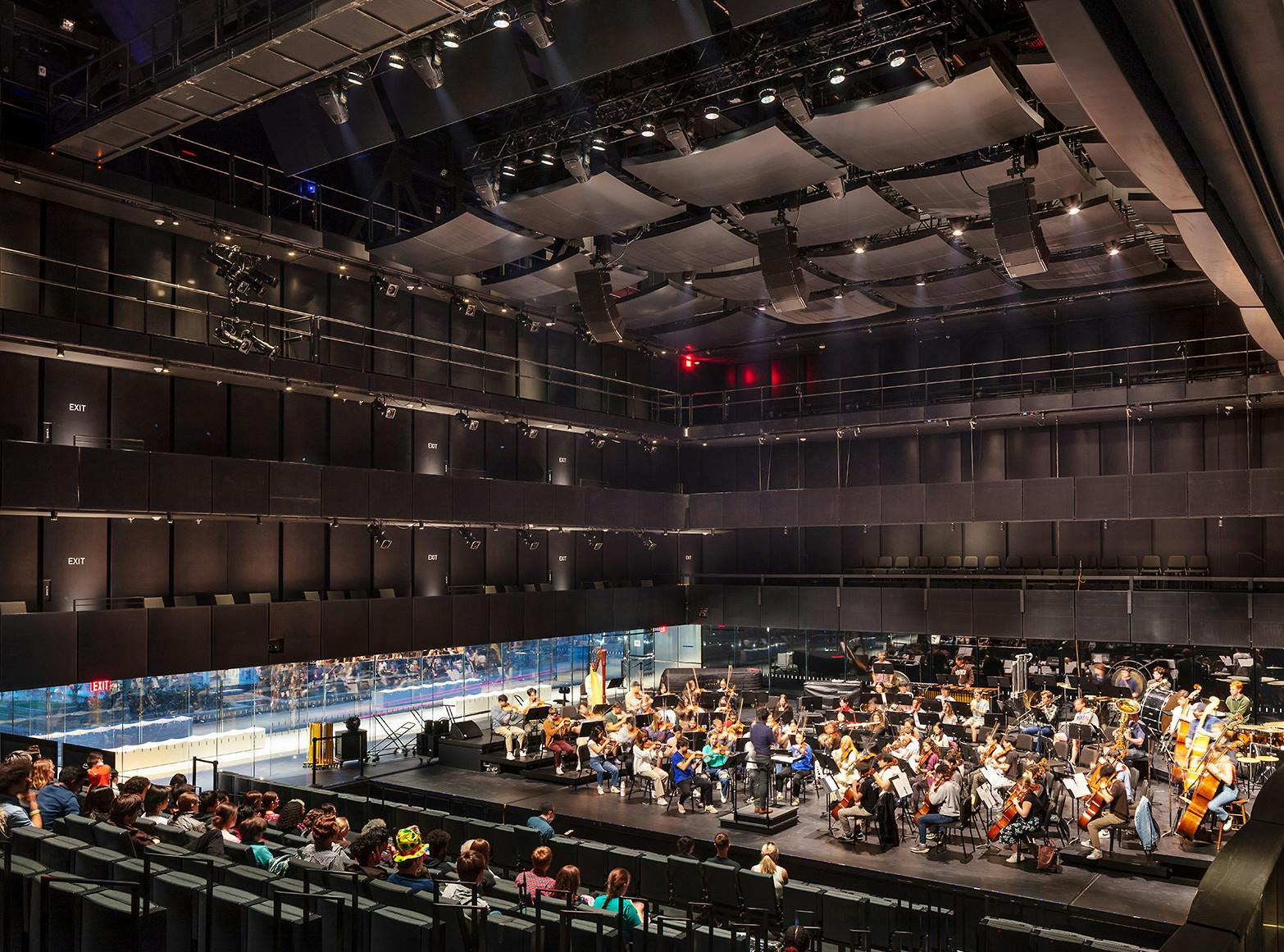Many members of the Brown community pass through the walkway between the Granoff Center for the Creative Arts and the Lindemann Performing Arts Center every day. While Granoff is a familiar space to many — frequently used for classes, performances, art installations and more — the Lindemann rarely appears as anything more than a mystery box. But after nearly four years of construction, that is finally going to change: The Lindemann Performing Arts Center is nearly complete.
Lindemann was born out of a need for a “state-of-the-art, acoustically excellent performance space” on campus, according to Chira DelSesto, director of programs and operations at Brown Arts Institute.
While the Granoff Center partially fills this need, “it doesn’t do everything,” according to DelSesto. Granoff lacks an ideal performance space for a full orchestra, for example.
“We always knew that at some point we were going to need to expand again,” DelSesto said.
‘Five buildings in one’: A transforming Main Hall
The Lindemann, which has one main level and three underground floors, is meant to address the need for more rehearsal and performance spaces on campus. It contains one major performance hall, several practice rooms and rehearsal spaces that may also be utilized for performances.
The building’s main level consists largely of a lobby — soon to be decorated with the works of well-known American artist Leo Villareal — and the Main Hall, the only space in the building designated solely for performances.
The hall is transformable and can take on five different configurations due to its retractable seats, moving stage and five moving walls, according to BAI Artistic Director Avery Willis Hoffman, who is also a professor of the practice of theatre arts and performance studies and classics.
“You’re getting five buildings in one,” DelSesto said.

In its orchestra set-up, the hall can contain a 100-person orchestra and seat an audience of 530 people. Additional seating is available in the hall’s two wrap-around balcony levels.
The hall can also be transformed into a more intimate recital space, an end-stage configuration typically used for theatrical performances, a seatless 40-by-40 foot cube and an entirely flat floor, Hoffman said.
The Main Hall will be what Hoffman called the center’s “collaborative (and) curated space.” While most performances in the hall will occur in collaboration with BAI, scheduled use of the space for concerts, including those put on by the University’s orchestra and chorus, will also be permitted.
Currently, the University’s orchestra and chorus are testing the Main Hall’s acoustics, configuration and stage. Hoffman added that other dance, theater and performance groups will also be permitted to test out the space over the summer.
“It definitely sounds a lot different than Alumnae or Sayles” Hall, said Vanessa Chang ’23, who plays the oboe for the University’s orchestra. As the orchestra was playing in the Main Hall, acousticians were adjusting the ceiling and shades so that various members of the orchestra could hear each other more clearly, she said.
Violist Chloe Kim ’25 similarly took note of the Main Hall’s reconfigurable set-up.
“The orchestra has always had to adjust for the acoustic nature of our performance venue, either by playing more loudly, more softly, with clearer articulation, etc., so it was really strange to have the venue adjust to us,” Kim wrote in an email to The Herald.
She added that the new performance hall’s seating arrangement differs from both Sayles and Alumnae, in that it is slanted and provides audience members with “a great view and an equal listening experience.”
Chang also pointed out that “having another space can be really helpful in terms of scheduling conflicts” between student groups. In the past, many groups have expressed concerns regarding the availability of various performance and rehearsal spaces.
‘Game changer’: Additional rehearsal, practice spaces for students
Increasing access to performance spaces is one of BAI’s primary goals in constructing the Lindemann. Underneath the main level of the building are three basement floors that contain several rehearsal and practice rooms — all of which will be available for students to schedule outside of class hours.
Extending about 40 feet beneath the main level is the Rehearsal Hall, which is meant to mirror the dimensions of the Main Hall, according to Hoffman. The room contains retractable seating for 150 audience members and is set to be the primary rehearsal space for Brown’s orchestra and chorus next semester.

The third basement level is home to the Movement and Performance Labs. The space, which features a wall-length mirror, sprung floors and retractable seating, is slated to be used primarily for ballet, Hoffman said.
According to Kent Kleinman, BAI faculty director and professor of the practice of History of Art and Architecture, the Performance Lab is essentially a black box theater and contains a “sacrificial floor” that can be painted and otherwise customized for specific performances.
Kleinman also pointed out that many spaces in the underground levels of the Lindemann are connected to airlocks, which essentially seal in sound coming from these rooms. The levels also contain lockers for orchestra members to store their instruments in, bypassing the process of instruments reacclimating to the temperature of the rehearsal space every night.
Both the third and second basement floors of the Lindemann contain multiple practice rooms. Each room will be available for students to schedule either online or onsite, Hoffman said. She added that students will gain access to the building when it opens in September.
The first public performance in the Lindemann is scheduled to take place on October 21, Hoffman said.
“Having been here for a long time, I know that we never have enough space,” DelSesto said. “I’m very optimistic that the Lindemann will be the game changer and that we’ll be able to just do more. I think that’ll be really great for the arts at Brown.”
Correction: A previous version of the story and its headline misquoted Avery Willis Hoffman.

Rya is an Arts & Culture editor from Albany, NY. She is a senior studying English and Literary Arts, and her favorite TV show is Breaking Bad.





